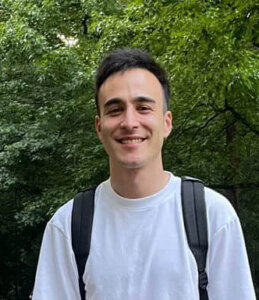In painting the horrors of both Ukraine and Israel at war, an artist finds echoes of Picasso’s ‘Guernica’
Zoya Cherkassky-Nnadi has been making art about the October 7th Hamas attacks and their aftermath
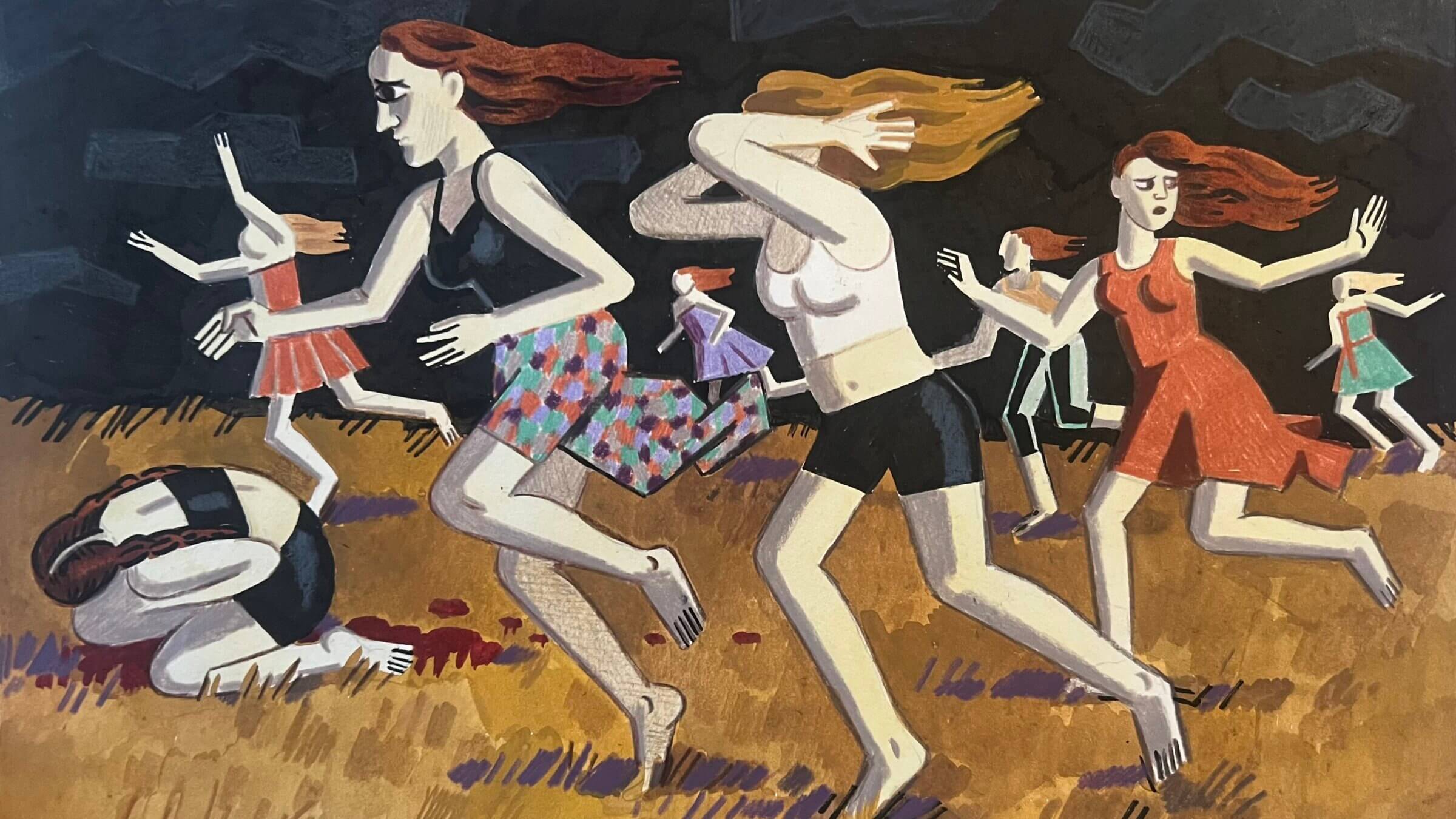
The Terrorist Attack at Nova Music Festival, 2023. Courtesy of Zoya Cherkassky-Nnadi and Fort Gansevoort
“We are refugees with a lot of experience.”
Zoya Cherkassky-Nnadi was calling me from Berlin, where she fled shortly after Hamas’s Oct. 7 terrorist attacks. Her most recent escape recalls how she and her family fled Kyiv, Ukraine, her birthplace, for Israel in 1991, just before the fall of the Soviet Union.
For the last two years, Cherkassky-Nnadi has been making art about war. In 2022, as she watched Russia invade Ukraine, she made a series of paintings depicting scenes of the country before and after the invasion, often donating the proceeds of their sales to Ukraine’s war effort.
Since settling into a friend’s apartment in Berlin, Cherkassky-Nnadi has been painting scenes of the horrors that have befallen Israel, where she lived up until about two weeks ago. On Oct. 17, on her Instagram, she posted a painting referencing Pablo Picasso’s Guernica (a 1937 oil painting Picasso made in response to a Nazi bombing campaign that killed over 1000 people in the Basque town of Guernica) and featuring an Israeli family hiding in terrified silence under a lamp.
Since then, she’s shared pieces depicting kidnapped women, the massacre at the Nova Music festival, and 18 children being held hostage by Hamas. Her paintings, rendered with watercolor, marker, colored pencil and wax crayon, are colorful and rendered in clear bold strokes on a black background; with expressive human subjects in the foreground, they tell the story of a nation in crisis.
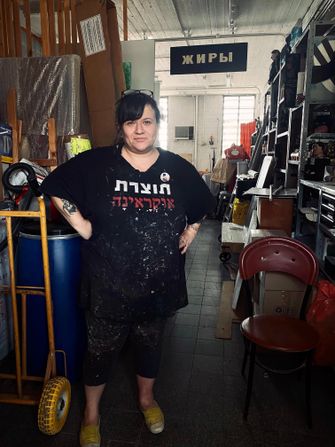
I spoke with Cherkassky-Nnadi about her creative choices, the value of art during wartime, and the differences between painting Ukraine and Israel.
This conversation has been edited for clarity and brevity.
What about the Be’eri Kibbutz attacks inspired you to make what you called “the Israeli Guernica?”
Guernica is the first image that my memory brought to me. Because it’s so similar: it’s just a massacre of innocent people. And something that we didn’t believe could happen in Israel, and in such a brutal way.
You depicted people’s hands covering their mouths and babies’ mouths. What’s the significance of that?
There were stories that parents tried to make their babies not cry [during the attacks]. There’s all these Holocaust stories of how Jews were hiding and babies were crying, and that’s how they were found. It’s bringing you [memories] of the Second World War and the Holocaust and everything. I think every Jew has this memory; it’s unavoidable.
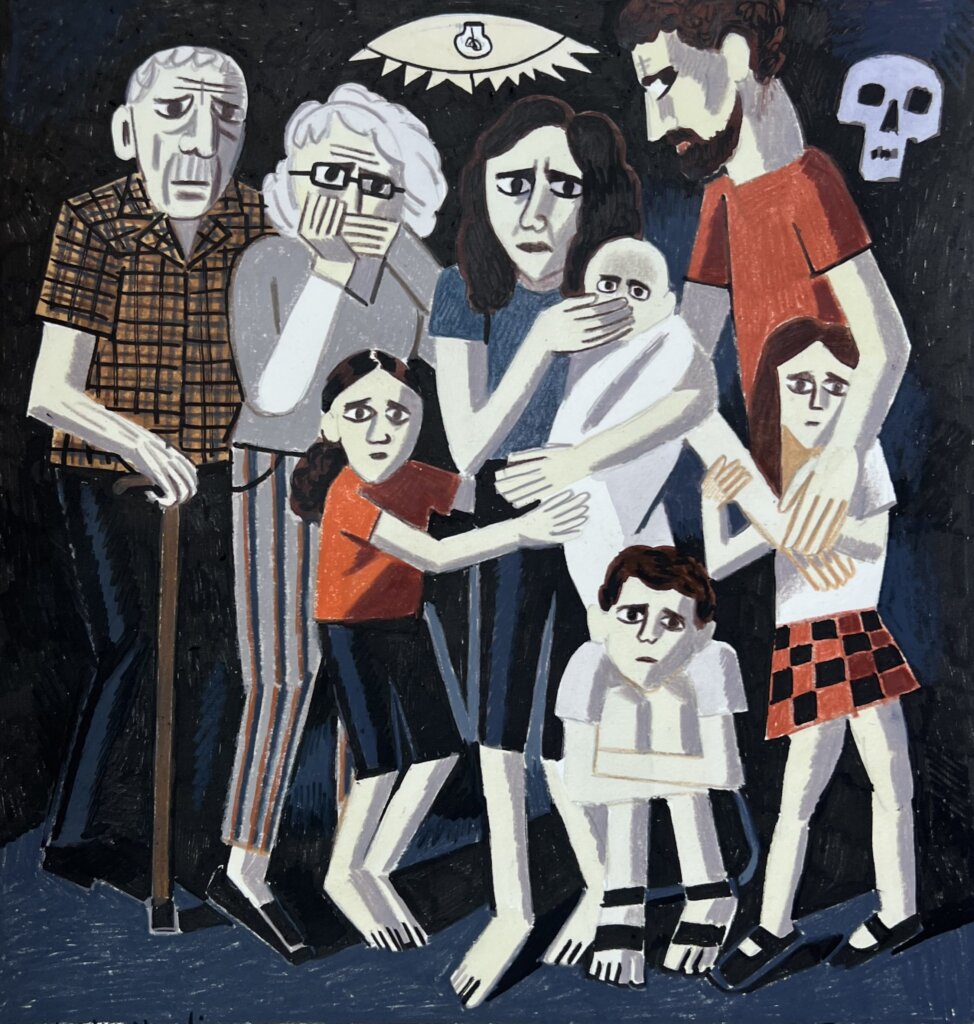
Why did two of your paintings, Kidnapped Women and The Terrorist Attack at Nova Music Festival, depict exclusively women?
I think women [suffer] particularly brutal treatment during war. Especially in this particular attack. There was this old woman released [from Hamas captivity] recently that was 85 years old, and they were beating her.
Your most recent painting depicts 18 children being held hostage by Hamas. As a mother yourself, how did it feel spending so much time on this subject?
Thinking about your child being held who-the-hell-knows-where, and you don’t know what is going on, is the worst thing. And to me, it’s the most important thing to bring the hostages back. This is the fourth painting that I’ve made, and I noticed that there has been a lot of attention and shares on Facebook and everything [for my earlier paintings]. I think somehow it spreads information.
In such moments, you don’t believe that art can change anything. But I see that [my art is] moving people, so I also kept going, because I want it to be everywhere.
You wrote the words “Bring Them Back” on the canvas. Why did you write that in English, not Hebrew?
In Israel, everybody understands what’s going on. It’s mostly addressing the international community. I see a lot of people blaming Israel and seeing Hamas as “freedom fighters.” It’s crazy. I’m a leftist. My whole life, I’ve been supporting a two-state solution, and I still do, but [Hamas] are not freedom fighters. They are terrorists.
Can you elaborate on what your motivations are when making this art?
I don’t think my brain is clear enough to make reasonable decisions. I’m just doing whatever feels right. Maybe it’s not right. But, you know, if I do not do something, I will lose my mind.
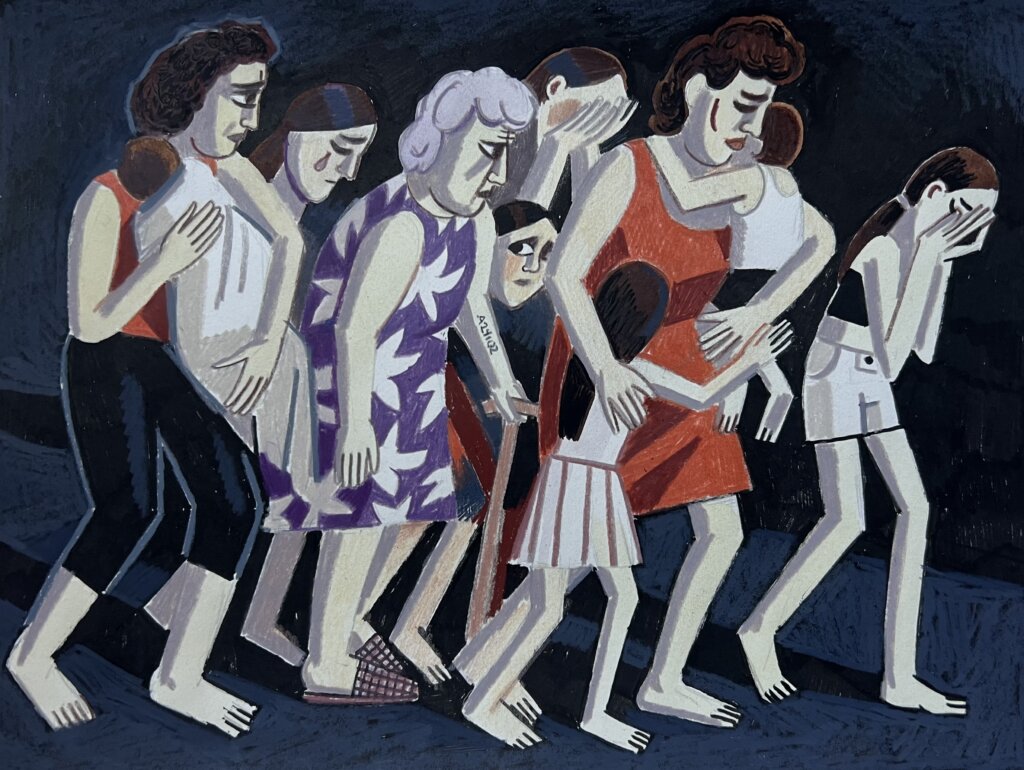
Does making art about the Israel-Hamas war feel similar to making art about the war in Ukraine?
In Ukraine, I experienced all these horrors through my family, because my sister and my two nieces and my two grand-nieces fled, and I led them to Israel, because this is what I could do in such a situation. Now it happens again, but the situation is very different. And also, the artwork is different, because now, it’s like my house is burned.
You’ve been opposed to what the Israeli government is doing in Gaza and the West Bank for a while. Do you think that you might end up making art about that in the future?
I already did in the past; I guess it will be in the future, too.
I totally disagree with the current government, and I blame them for what happened. I think it happened because of them: they abandoned this side of Israel — all those kibbutz people. And all the army was protecting settler hooligans in Judea and Samaria, in the West Bank.
What’s the political outcome you’re hoping for now?
I still think that there must be a two state solution and I think that the occupation is only making it worse. The longer this situation lasts, the more radical powers are taking over in Israel and in Palestine. I believe that all this killing, all this bombing back-and-forth is not helping.
A message from our Publisher & CEO Rachel Fishman Feddersen

I hope you appreciated this article. Before you go, I’d like to ask you to please support the Forward’s award-winning, nonprofit journalism so that we can be prepared for whatever news 2025 brings.
At a time when other newsrooms are closing or cutting back, the Forward has removed its paywall and invested additional resources to report on the ground from Israel and around the U.S. on the impact of the war, rising antisemitism and polarized discourse.
Readers like you make it all possible. Support our work by becoming a Forward Member and connect with our journalism and your community.
— Rachel Fishman Feddersen, Publisher and CEO



